Why electronic shelf labels are a little-known retail efficiency secret
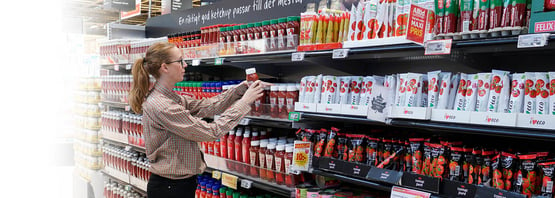
Insider Trends’ Cate Trotter interviewed Pricer’s chief marketing officer Duncan Potter about why the benefits of electronic shelf labels go far beyond pricing and just how retailers should be using them to save time and drive efficiency. Read the full article in Insider Trends, or a summary below.
Electronic shelf labels aren’t just a tool for quickly changing a product price in-store.
That’s according to digital retail solutions company Pricer which knows a thing or two about the tech having pioneered the development and use of electronic shelf labels over the last 30 years.
In fact, electronic shelf labels are part of the much wider digitalisation of the retail store and are one of the little-known secrets to driving greater efficiency with applications from replenishment to click and collect.
We spoke to chief marketing officer Duncan Potter about why the benefits of electronic shelf labels go far beyond pricing and just how retailers should be using them to save time and drive efficiency.
Duncan Potter, Chief Marketing Officer, Pricer

What does Pricer do?
Pricer is a platform for in-store efficiency and consumer engagement.
We’ve spent the last 30 years building systems based on electronic shelf labels that allow for dynamic pricing changes and consumer engagement through providing information to the consumer at the shelf edge.
We also provide tools that dramatically increase the efficiency of the store from replenishment to click and collect.
How do you get the pricing information?
We manage the way that the price is displayed, but we get that information from other systems. Typically, this is the ERP because that’s really the one version of the truth when it comes to pricing.
We also have partnerships with companies who do all of the backend dynamic pricing calculations.
What success stories have you had with your products?
We are proud to have been working with Carrefour for over 20 years. They recently, and quite rightly, went out and tested us against the rest of the market, which ended up with them reiterating their commitment to us.
We’re in the process of rolling out a new generation of capabilities to the main Carrefour stores globally. We’re very clearly a part of their strategy as we have the capabilities that they need to be able to increase and maintain customer satisfaction and loyalty, as well as drive efficiency in their store infrastructure.
Our relationship with them is very much a partnership and we collaborate at every level from CTO downwards.
France is really leading the way in the adoption of this technology, so we have many other clients there using our system including Intermarché and Casino.
We’ve been instrumental in helping French retailers actually do what they need to do.
The first part is making sure that they are working at the highest level of efficiency as labour costs in France are reasonably high. This is a great way of both retaining quality staff and bringing in, for instance, seasonal staff efficiently.
The second part is making sure that they always have the correct price displayed for the goods that they have in the store as France has some relatively high penalties for a mismatch of price at the point of sale.
That goes from the largest hypermarkets with 75,000 to 200,000 SKUs all the way down to a small pharmacy, serving a very specific clientele in a small area of Paris.
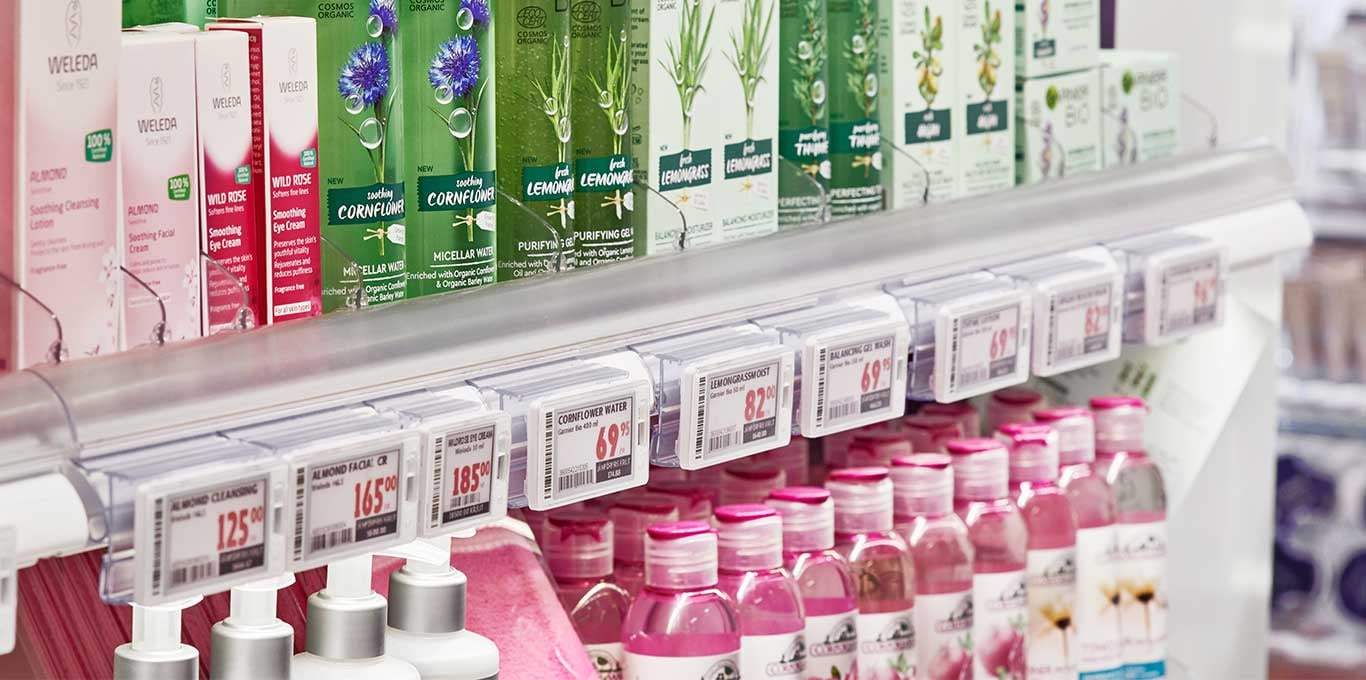
What are the typical benefits or ROI from using your electronic shelf labels?
We sit down with our clients at the start of the process to work out what we think the ROI should be. They’ll go back and measure it. Most of the time we come out with something which is either fairly close to or better than they actually anticipated.
Over the last five years we’ve seen that a few small innovations have led to absolutely astonishing increases in efficiency. It’s not just about changing the price in front of the consumer anymore.
Many of our customers were calculating ROI based on labour savings from replacing all their paper labels with electronic shelf labels.
Then five or six years ago we introduced a new product called the Instant Flash. This is an LED light on the electronic label which enables us to use very simple visual signalling to allow store associates to immediately identify where something is. This makes replenishing the shelves far quicker.
At first, retailers weren’t convinced as they said they already know where everything is. But they don’t. There are tens of thousands of SKUs in a store.
A while ago we worked with a very large home improvement organisation in the US where we were able to show somebody who’d been there for 40 years how we could increase his productivity by 20-30% on replenishment.
With our solution, staff scan the product with a handheld device, the label flashes to show where it goes, they put it down and move onto the next one. It’s very quick. Typically, we see a 10-30% saving in time to replenish.
That’s for experienced staff, so the benefits are even higher when it comes to temporary staff who don’t know where anything is.
We’re also able to locate products very accurately in a store because we know where all the labels are. You don’t have to know where a product is. You just need to know where the label is, which you can see because of the LED.
This enables more efficient click and collect and pick from store fulfilment for online orders. Staff can pick and pack orders more quickly because they’re not wondering whether they’ve got the right crisps or the right toothpaste.
We’re also able to support our clients to offer more services.
Many of our clients in France have a tablet at the front of the store or an app where you can search for the product you want, and it will tell you where it is. We can even overlay the information on a map of the store on the shopper’s smartphone so they can use it to navigate the store.
If you start to add all of these different use cases together, we see that the ROI is moving towards six to 18 months.
My message to retailers is that if you’re thinking about implementing electronic shelf labels to just change price, then you’re missing a trick and you’re missing an enormous opportunity for additional capabilities.
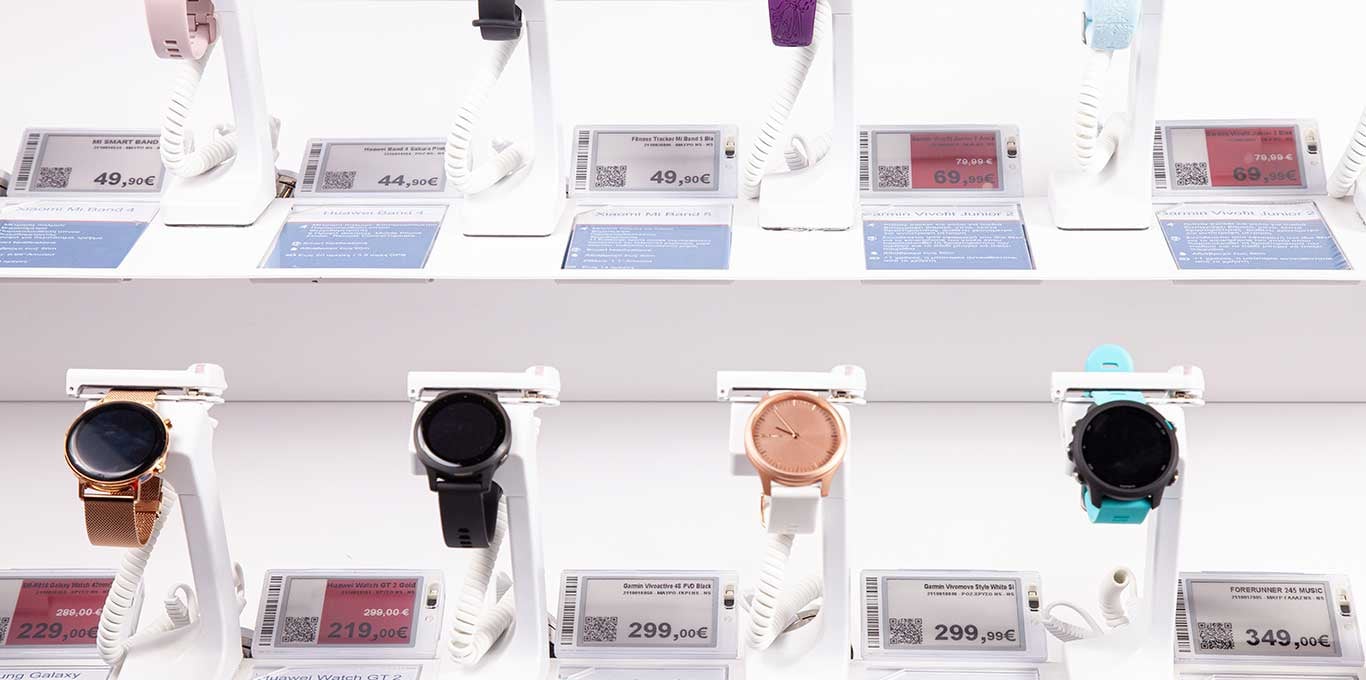
What other applications are there for electronic shelf labels?
There’s lots of opportunities for driving more information.
From a consumer engagement point, if you take sports shoes, for example, price can change dramatically even within the day.
We’ve been working with Intersport to make the experience of buying sports shoes very slick. We ran trials with them in Greece to place a small QR code on the electronic shelf label. The consumers could scan it with their smartphone to pull up a whole range of additional information.
The QR code is also used by the store associates to get more information on their PDA including technical information, stock information, promotional information, pricing and more, so they don’t have to recall it and can be completely accurate in what they’re telling the customer.
The associates love it as it makes their lives easier. Instead of rushing backwards and forwards looking for things, they can stand by the products. They can actually engage with the customers with absolute confidence.
It’s absolutely transformation in terms of the store associates and their satisfaction.
Why do you think certain countries have adopted this faster than others?
The easiest way to understand the adoption for the first 25 years of the life of electronic shelf labels is to map average retail labour costs. You can literally predict that Iceland, Norway, Sweden, France, probably down about as far as Germany, are all going to be adopting these things like crazy because they have very high labour costs.
The next group goes from Italy and the UK to the US, where replacing the paper label is not really enough. There has to be something on top of that.
The reason we’re starting to now see interest from retailers in those countries is because demand for people post Brexit and post COVID is driving costs up.
We’ve also seen the dramatic effect that Amazon coming into the market and their vast ability to marshal enormous amount of resource and money and develop things that most other retailers can only dream of.
In the US the mainstream bricks and mortar retailers are starting to realise it’s about time to start building a very strong digital platform and then lay these use cases on top of it. They’re taking a much more measured approach, but they’re moving forward.
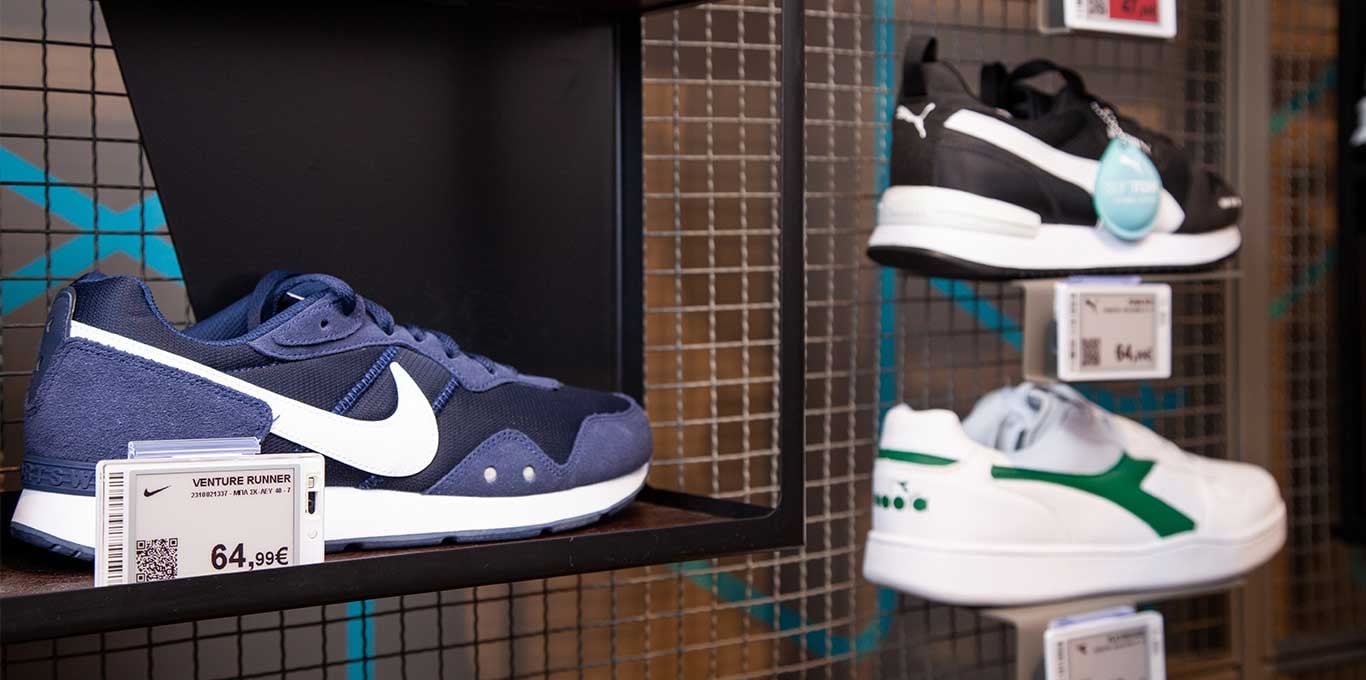
What trends should we be aware of in pricing?
As human beings we are getting used to prices going up and down.
This was initially driven by petrol stations where the price can be different every day. Those who have an Amazon account realised that prices are going up and down all the time, depending on supply and demand.
If you’ve left things in your basket for a couple of days, it’s a fair bet that some of them are going to go up or down. We’ve grown to accept that to a certain extent.
One of the other things that we’ve seen is this trend towards waste management, especially in grocery, and being able to sell goods before they are not saleable anymore. We now have the ability to actually do something about that.
If you combine this whole trend around dynamic pricing, you see that price is very important. In ecommerce, it is very easy to make sure that customers are getting the right price. You cannot do that so easily in a store with paper labels.
Electronic shelf labels allow prices to change in real time so that the correct price is always displayed to the consumer.
Retailers do need to be careful though because nobody wants consumers to feel they are being ripped off or that their trust being abused. Policies have to be applied that provide transparency and why prices are going up and down.
We have to make sure that whatever goes in front of consumers, it’s not a surprise and is exactly what’s reflected when they get to the point of sale.
For some products, we’re also seeing a lot of interest in immediate payment at the shelf. This feeds into the interesting area of unmanned stores.
We have a partner in Sweden called Lifvs that puts unmanned stores into remote Swedish towns.
Electronic shelf labels, automated doors, cameras, all of those things are very important to that model. There’s a significant amount of automation going on to make sure that there is no surprise for the consumer when they buy something.
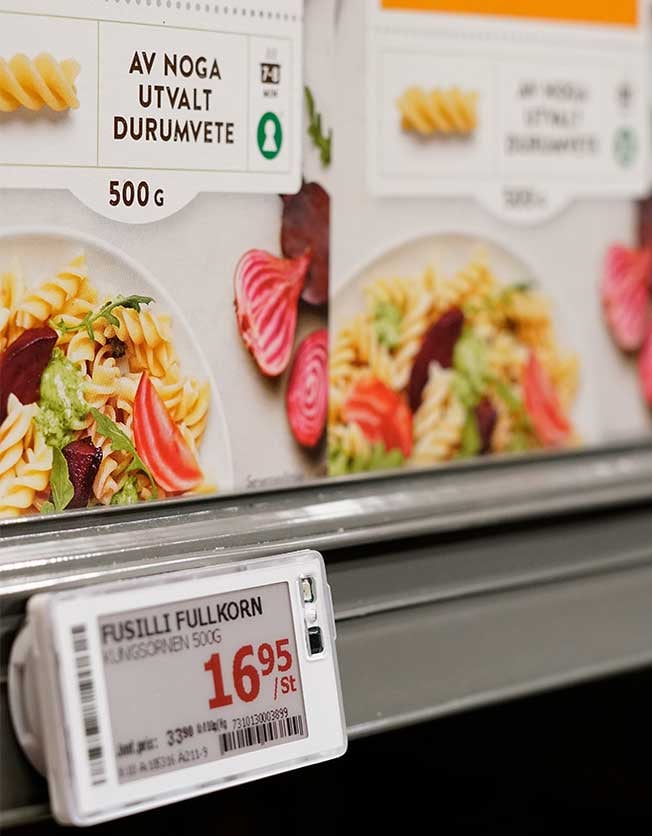
Are there any new features you’re developing?
We’re collaborating with E Ink, who make the paper that we use in our electronic shelf labels, to launch coloured labels.
They’re not full colour yet, but this development allows for much more vibrant labels to be used for things like loyalty programmes and promotions. For example, certain colours could be used for members only prices.
Another thing we’ve been working on is shelf cameras which are GDPR compliant. They don’t take pictures of people, they’re there as stock management systems or shelf management systems.
We can set up the camera to constantly take images of the goods on the shelf, which gives us the ability to start doing things like automatic gap detection.
The benefit of our system over others is that we don’t need to read the label to know what the product is. We don’t even need to recognise what the product is.
There are other systems that allow you to do that. They tend to struggle with accuracy though. At the moment they’re achieving 75 to 80% accuracy. We need something which is up to 98 or 99% accuracy at least, if not higher.
When our camera is installed it instructs the labels within that area to flash their own ID. It then recognises which labels it is looking at and what the products are.
It’s incredibly effective. It also means that you are extremely accurate in what it is that you’re looking at. We see the ability to add a lot more capabilities to this such as traffic analysis and more detailed shelf optimisation.
We’ve also seen a lot of interest around more sophisticated and integrated store signage. The way that we do that is we integrate the electronic shelf labels into the store signage.
It’s simple stuff, but it’s incredibly important. There’s incredibly valuable real estate in shelf edges for ads that are fully integrated with the price management system.
This article was originally published here on December 6, 2021.